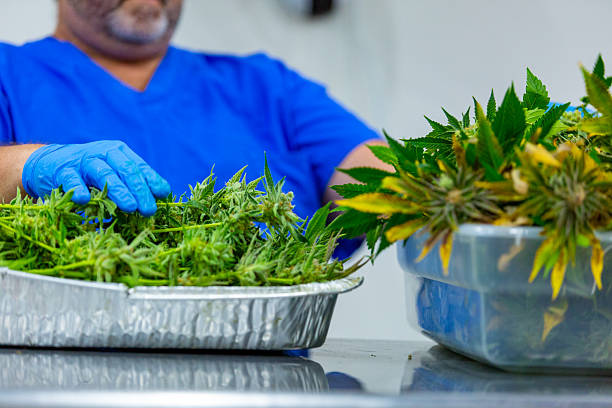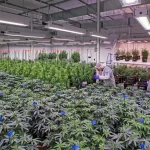Botanical terpenes are aromatic compounds naturally produced by plants that give them their distinctive scents and flavors. These compounds are found in a wide range of plants, including herbs, flowers, fruits, and trees. The refreshing smell of pine, the calming scent of lavender, and the citrus aroma of oranges all come from terpenes. In recent years, there has been growing interest in using botanical terpenes for wellness, aromatherapy, and flavor enhancement. Unlike synthetic alternatives, botanical terpenes are extracted directly from plants, making them a natural and pure source for those seeking holistic benefits.
Understanding Botanical Terpenes and Their Benefits
Botanical terpenes play an important role in plant biology. They help plants repel pests, attract pollinators, and protect against environmental stress. For humans, these compounds offer an array of potential benefits, from relaxation and focus to stress relief and improved mood. Each terpene has its own unique characteristics and effects. For instance, linalool, found in lavender, is known for its calming properties. Limonene, abundant in citrus fruits, is uplifting and energizing. Myrcene, commonly found in mangoes, can promote relaxation and restfulness. When properly extracted and blended, botanical terpenes can be used in various ways to enhance daily living.
How Botanical Terpenes Are Extracted
The process of extracting botanical terpenes is precise and delicate to ensure their purity and effectiveness. Most are derived through steam distillation, where plant material is gently heated to release aromatic compounds without damaging their structure. Some manufacturers use cold pressing or CO2 extraction, both of which preserve the integrity of the terpenes while avoiding chemical residues. The extraction method determines the quality and aroma profile of the final product. High-quality botanical terpenes are typically clear, aromatic, and free from contaminants. Choosing products with transparent sourcing and testing ensures that you are getting the best quality available.
Uses of Botanical Terpenes in Everyday Life
The applications of botanical terpenes extend far beyond aromatherapy. They are widely used in cosmetics, skincare, food flavoring, and even in natural cleaning products. Many people use terpene blends in diffusers to create calming or energizing atmospheres in their homes. Others incorporate them into massage oils or lotions to enhance the therapeutic experience. In the wellness industry, botanical terpenes are often added to essential oil formulations to improve scent complexity and effectiveness. Even in the cannabis industry, these compounds are used to restore aroma and flavor to products that lose their natural terpenes during processing. This versatility has made botanical terpenes increasingly popular across multiple industries.
The Role of Botanical Terpenes in Aromatherapy
Aromatherapy is one of the most common uses for botanical terpenes. By diffusing terpenes into the air, users can enjoy both the pleasant aroma and the potential mood-boosting effects. For example, limonene and pinene can create a refreshing and uplifting environment, while myrcene and linalool may promote calmness and rest. Many practitioners combine different terpenes to create custom blends tailored to their emotional or physical needs. Regular use of these aromatic compounds can enhance focus, promote relaxation, and support emotional balance. Their natural origin also makes them a preferred option for those who value clean and plant-based wellness solutions.
Choosing High-Quality Botanical Terpenes
Selecting the right botanical terpenes requires attention to quality, purity, and sourcing. Reliable producers provide third-party lab reports verifying that their products are free from additives or solvents. When buying terpenes, look for natural, plant-derived options rather than synthetic imitations. Pay attention to the aroma strength and clarity of the liquid, as impurities can affect both scent and safety. Reputable suppliers also disclose the specific plants used in extraction, giving consumers confidence in the authenticity of the product. High-quality botanical terpenes will have consistent aromas, be easy to mix with carrier oils, and maintain their potency over time when stored properly.
Safety Guidelines for Using Botanical Terpenes
Since botanical terpenes are highly concentrated, they must be handled carefully. Always dilute them before topical or aromatic use. When creating blends, start with a small amount and gradually adjust to your preference. Avoid direct skin contact with undiluted terpenes, as they may cause irritation. Storage is also important; keep them in airtight containers away from heat and sunlight to preserve their potency. Following safety guidelines ensures that you can enjoy the benefits of these natural compounds without adverse effects. Consulting product-specific instructions or expert guidance is a good practice for beginners.
The Growing Popularity of Botanical Terpenes
As awareness of natural wellness grows, more people are discovering the potential of botanical terpenes. They provide a bridge between science and nature, allowing individuals to experience the therapeutic qualities of plants in concentrated form. The increased demand for clean-label and eco-friendly products has further boosted their appeal. Industries from cosmetics to food are embracing terpenes for their versatility and sensory benefits. Consumers appreciate that botanical terpenes are both natural and sustainable, aligning with the trend toward mindful living. Their growing availability online also makes them accessible to anyone interested in enhancing their daily routines naturally.
FAQs
What makes botanical terpenes different from synthetic terpenes?
Botanical terpenes are extracted from natural plants, while synthetic terpenes are chemically produced in laboratories. Natural terpenes are generally considered safer and more authentic in aroma and effect.
Can botanical terpenes be used directly on skin?
They should always be diluted with a carrier oil before skin application. Using them undiluted can cause irritation due to their high concentration.
How should I store my botanical terpenes?
Store them in dark glass containers in a cool, dry place away from sunlight. Proper storage helps maintain aroma, potency, and shelf life.
Are botanical terpenes safe to inhale?
Yes, when used in diffusers or aromatherapy devices as directed. However, ensure the area is well-ventilated and avoid overexposure to concentrated vapors.
Can I mix different terpenes to create a custom aroma?
Absolutely. Mixing terpenes allows you to craft unique blends that match your preferences. Experimenting with small amounts can help you find the perfect balance.
Conclusion
Botanical terpenes represent one of nature’s most fascinating gifts, offering a pure and aromatic way to experience the therapeutic potential of plants. From enhancing mood to supporting relaxation, these natural compounds serve multiple purposes in modern wellness and lifestyle practices. As more people seek alternatives to synthetic fragrances and harsh chemicals, botanical terpenes provide a sustainable and effective option. Whether used in aromatherapy, skincare, or personal environments, their versatility makes them an essential part of holistic living. By understanding how to select, store, and use them safely, anyone can enjoy the benefits they bring. The rise of botanical terpenes marks a renewed appreciation for the power of nature and its ability to improve our daily lives through the simplest yet most profound scents.
Medical Disclaimer:
The information provided in these blog posts is intended for general informational and educational purposes only. It is not a substitute for professional medical advice, diagnosis, or treatment. Always seek the advice of your physician or other qualified healthcare provider with any questions you may have regarding a medical condition. The use of any information provided in these blog posts is solely at your own risk. The authors and the website do not recommend or endorse any specific products, treatments, or procedures mentioned. Reliance on any information in these blog posts is solely at your own discretion.















